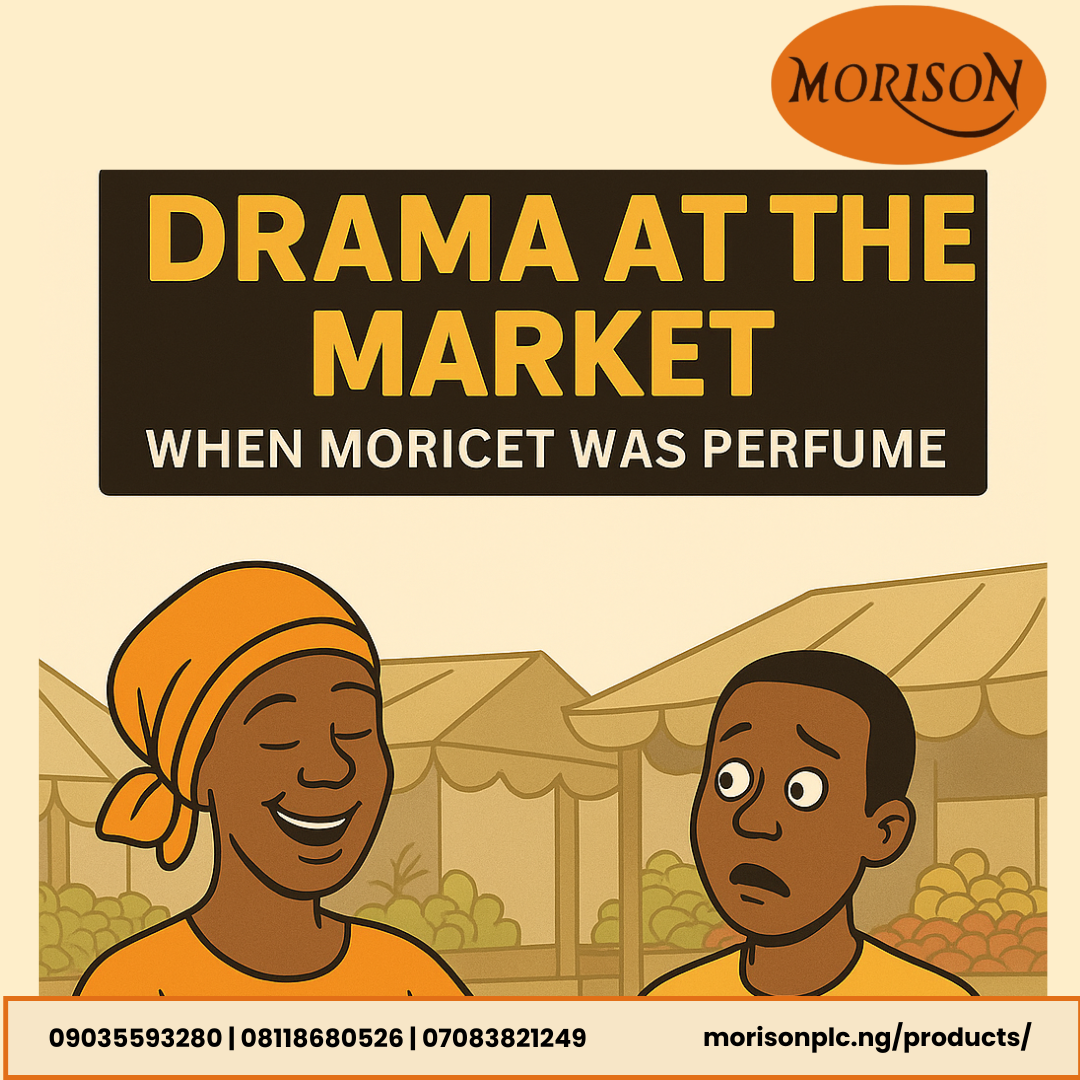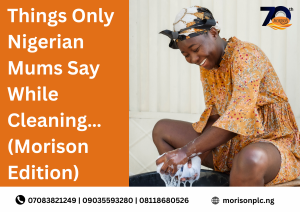If you’ve ever walked through a Nigerian market, you know it’s more than just a place to buy food or household goods. It’s a theatre — full of drama, gist, unexpected laughter, and sometimes unbelievable scenes. From the shouting of traders to the bargaining skills of buyers, anything can happen in a Nigerian market.
But one day at Oyingbo Market, something truly memorable occurred. And no, it wasn’t about yam prices or fake designers — it was about Moricet Antiseptic.
The Confusion
A young man, sweaty from navigating the busy stalls, was desperate to “smell fresh.” He reached into his bag, pulled out a small bottle, opened the cap, and confidently poured some liquid into his palm. He rubbed it on his neck and shirt with all the pride of a man wearing luxury cologne.
Within seconds, the sharp, hospital-clean fragrance of Moricet filled the air.
“Oga, you dey go clinic?” a trader shouted.
Another laughed, “No be perfume o, na antiseptic!”
The crowd burst into laughter. He wasn’t spraying Dior or Channel — he was pouring Moricet, the trusted antiseptic, like body splash.
Why the Mix-Up?
To be fair, Nigerians have a way of “re-purposing” products. Some use kerosene to kill head lice, blue detergent to whiten clothes, or even balm to cure everything from headache to chest pain. So it’s not surprising that a sharp-smelling antiseptic like Moricet could be mistaken for something else.
But unlike perfume, Moricet is not for fashion. It’s for protection.
✅ The Right Way to Use Moricet
According to the Morison Product Catalogue, Moricet has stood the test of time as a multipurpose antiseptic liquid for homes, hospitals, and personal care. Here are its proper uses:
- First Aid: Pour onto cotton wool or directly on the palm to clean cuts, wounds, and bruises, preventing infections.
- Skin Protection: Effective against dandruff, nappy rash, and minor skin irritations.
- Personal Hygiene: Dilute in bathing water for babies, mothers, and adults for germ protection.
- Disinfection: Used in cleaning hospital equipment, surfaces, and even in homes for hygiene.
Every Nigerian household knows that familiar brownish bottle with a clean fragrance. For many mothers, Moricet is the first line of defense in keeping their family safe.
Real-Life Scenarios Where Moricet Shines
- A mother adds a capful of Moricet into her baby’s bathwater to protect against nappy rash.
- A teacher keeps it in the school’s first aid box to clean a child’s scraped knee.
- In hospitals, nurses use it to disinfect surfaces and equipment to keep patients safe.
- Families pour a little in water for bathing during hot weather to stay refreshed and protected.
It’s these everyday uses that have made Moricet a household name for decades.
Market LessoN
That man at Oyingbo Market may have poured Moricet like perfume, but he gave us all a good laugh and reminded us of something important: Moricet is not about fashion — it’s about protection.
So while perfumes make you smell nice for a party, Moricet keeps you and your loved ones safe from germs, infections, and skin problems. From homes to hospitals, it is more than just a liquid — it’s a shield.
Conclusion
The truth is, in Nigeria, we love a good laugh. But behind the market joke lies an important reminder: antiseptics like Moricet are indispensable in daily life. They’re not trendy perfumes, but they keep families, schools, and hospitals healthier and safer.
So the next time you see Moricet in your home, don’t spray it like Dior — pour it for what it was truly made for: first aid, hygiene, and disinfection.
👉 Learn more about Moricet and other trusted hygiene products here. For more insights on hygiene practices and safe antiseptic use, check out the World Health Organization’s hygiene resources



